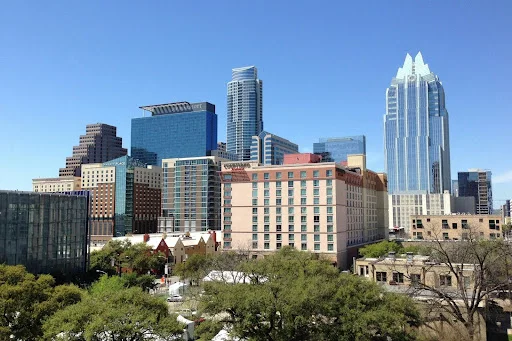Texas has a way of inviting people in with big skies, steady job markets, and neighbourhoods that still feel like communities rather than anonymous clusters of houses at Texas Cities.
Families relocating from out of state often arrive with a single idea of “Texas living,” only to learn that the state is more of a mosaic—distinct cultures, different rhythms, and wildly varied landscapes stitched together under one flag.
Exploring the family-friendly side of Texas means looking past stereotypes and noticing the subtle cues that shape daily life: school systems that anchor entire neighbourhoods, commutes that depend on which direction the wind of development is blowing, and city identities formed by a mix of old values and new pressures.
Where Texas Growth Meets Livability
Population growth on its own doesn’t make a place suitable for raising a family. Some cities expand in ways that strain infrastructure, while others find harmony between expansion and quality of life. Texas offers examples across the spectrum, and families quickly learn that “growing fast” can mean opportunity or headache depending on how a city handles it Texas Cities.
Before dipping into individual cities, it helps to understand the framework that gives Texas its family-friendly reputation: large homes at more forgiving prices, a culture of public school pride, and a strong sense of local identity that doesn’t get washed away by growth.
Keep exploring—this related post offers clarity and ideas you’ll appreciate instantly.
Austin: Creativity, Nature, and the Push for Balance
Austin often takes the spotlight, though not for a single reason. Parents who choose Austin usually want their kids surrounded by imagination—music events, quirky festivals, creative schools, and greenbelts wrapped around neighbourhoods. The city encourages a kind of openness that many families crave.
But Austin isn’t the “easy” option. The rising cost of living and the crunch of rapid development can feel like a trade-off for the city’s character. Families gravitate toward suburbs such as Cedar Park or Dripping Springs, where schools are strong and space comes without the downtown hustle. It becomes a balance: stay close to the cultural spark, but plant roots in calmer pockets nearby.
San Antonio: Steady, Spacious, and Surprisingly Underrated
San Antonio doesn’t shout for attention, but it delivers consistency—an attribute families appreciate more than trendiness. The pace is gentler, homes come with yards that actually feel like yards, and cultural heritage isn’t curated; it lives in the architecture, the food, and the family-centric traditions.
Strong public school districts in areas like Alamo Heights, Northside, and North East ISD catch the eye of newcomers. The blend of affordability and stability gives families room to grow without the stress of chasing every market shift. It’s a city that welcomes long-term planning of Texas Cities.
The Cities That Let Families Breathe
Texas is large enough to offer different definitions of “breathing room.” For some families, this means acreage and horses. For others, it’s the ability to send kids out on bikes without worrying about traffic from every direction. These cities emphasise space, predictability, and a calmer kind of community fabric.
Fort Worth: Big City Services, Small City Heart
Fort Worth positions itself differently from its flashier neighbour, Dallas. It has museums, reputable universities, and a robust economy, yet it still carries a slower tempo that many parents prefer. Families often mention how Fort Worth “feels manageable”—schools with supportive communities, commutes that don’t devour the whole day, and neighbourhoods that retain their character as the city expands.
What stands out is the city’s commitment to preserving its identity. Even as districts redevelop, Fort Worth doesn’t discard its historic roots. That sense of continuity appeals to parents who want their children anchored in place rather than drifting between rapidly changing environments in Texas Cities.
Plano and Frisco: The Blueprint for Modern Suburban Life
The northern edge of the Dallas–Fort Worth metroplex has become the stage for master-planned communities that seem built with family life in mind. Plano has long been known for top-tier schools and safe, polished neighbourhoods. Frisco, meanwhile, has grown into an enclave that blends high-performing schools, family entertainment, and new developments with an air of convenience.
Families in these areas often talk about infrastructure the way others talk about weather: constantly present, shaping everything. Sports complexes, libraries, community centres, and thoughtfully designed parks are the kind of everyday luxuries that quietly influence where families stay for the long haul.
Where Tradition and Modern Needs Meet
Texas isn’t uniform, and some of the best family-friendly cities sit between metropolitan energy and small-town calm. These communities appeal to families who want stability without wandering too far from job opportunities or healthcare access.
Round Rock: Order, Stability, and a Clear Identity
Round Rock sits just far enough from Austin to retain a sense of order. It is known for its schools, its meticulously maintained neighbourhoods, and its predictable way of doing things. Families appreciate that predictability. They mention how the city grows but doesn’t sprint, how it adopts new features without losing its established rhythm.
The local economy is anchored by strong employers, which gives families confidence that their roots will have room to deepen. An identity built around consistency may not sound glamorous, but it resonates strongly with parents planning for the next decade, not the next year.
Sugar Land: Comfort With an Emphasis on Community
South of Houston, Sugar Land blends diversity, strong schools, and well-planned residential developments. Many families are drawn to the way the city combines cultural richness with a sense of security. Community events are frequent, green spaces are well cared for, and the city’s layout encourages families to form routines that feel safe and connected.
Sugar Land’s neighbourhoods often feel like self-contained ecosystems—shopping, parks, reputable schools—all within short distances. The structure gives families a sense of cohesion, making everyday life smoother.
How Families Actually Decide
Choosing a city in Texas isn’t just checking boxes on cost, schools, and commute. Families look for texture: the quality of a park on a Saturday morning, how neighbours greet each other, the sound of traffic at 7 p.m., the feeling of safety at dusk. Each city mentioned above offers its own version of family life, and the best fit comes from noticing details that don’t make it onto comparison charts.
Visiting at the Right Moments
Some families scout cities in the summer heat, some in the mildness of spring, and both experiences reveal different truths. Texas seasons shape outdoor life—sports schedules, afternoons at parks, the simple act of walking to school. Understanding how a city feels at different times of year gives a clearer picture than any real estate listing.
Growth Without Being Ruled by It
Every Texas city is growing, but families decide based on how growth interacts with daily routines. Traffic patterns, the pace of housing development, school zoning changes—these elements form the practical side of the decision. The cities that excel aren’t the ones that grow the fastest; they’re the ones that grow while keeping families at the centre of planning.
Explore more articles filled with insights that help you grow with each click.






